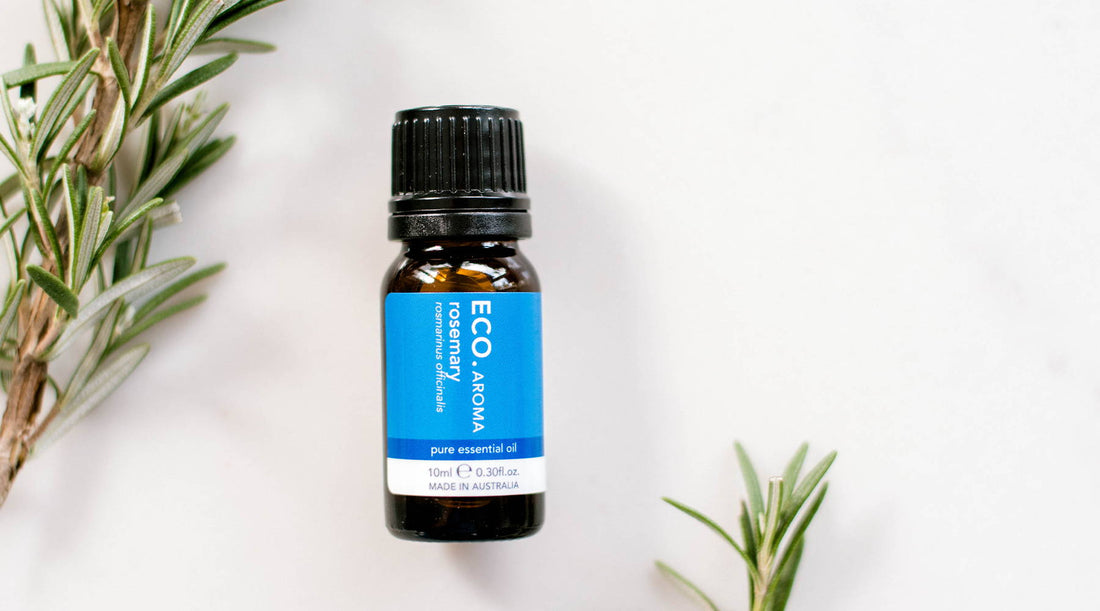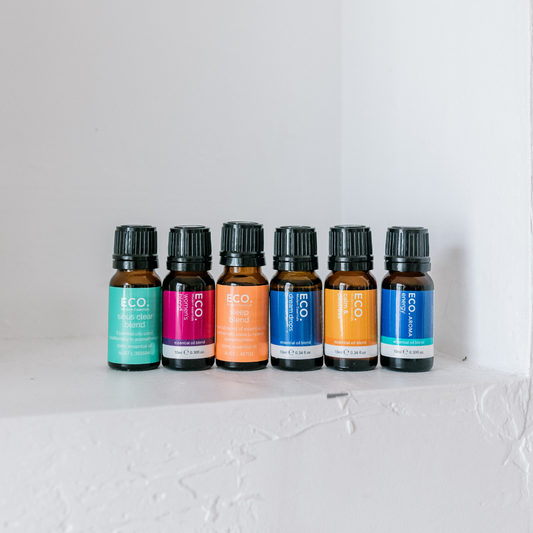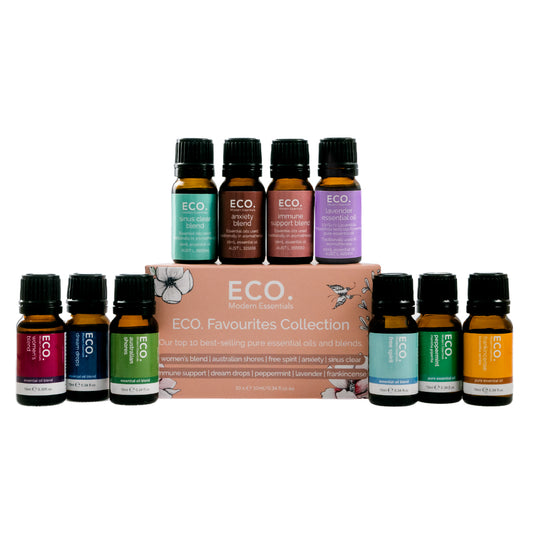
Benefits & uses of Rosemary essential oil
Known as Lamiaceae, the 'Mint Family' includes some of the most important and popular plants for gardens, from Thyme, Sage and our beloved Rosemary. A few familial characteristics shared among most Mint Family relatives are the shape of the stems, leaves, tiny flowers, and volatile oils in their leaves and stems, which gives them their familiar and delicious fragrances utilised in Aromatherapy today. There are 3 main chemotypes of Rosemary, they are Rosemary ct. verbenone, Rosemary ct. 1.8 cineole, and Rosemary ct. camphor (ct. = chemotype). What is the difference between these chemotypes?
- Rosemary ct. verbenone is well known for being invigorating, refreshing, and uplifting while containing less camphor.
- Rosemary camphor and 1.8 cineole are very stimulating and dilating and not recommended to be used during pregnancy or for those with epilepsy or high blood pressure.
Where is Rosemary (Rosamarinus officinalis) essential oil from?
Rosmarinus officinalis (Rosemary) oil is native to the Mediterranean region wild collected from the Ministry of Forest overseen by the Moroccan Government.
How is Rosemary essential oil made?
Rosemary essential oil is harvested in June - September by hand collection with sickles and is extracted by steam distillation. The steam used is always less than 0.5 bar, ensuring a high quality of essential oils since they are extracted at a low temperature. Steam distillation separates and purifies the natural aromatic compounds.
What does Rosemary look like?
Rosemary is an evergreen, perennial shrub with needle-like leaves with white, blue or purple flowers - a perennial plant is a plant that lives more than two years. Rosemary can be grown in a pot or container to growing up to four feet and while it thrives in warm climate it is hardy in cooler climates aswell.
What does Rosemary essential oil smell like?
The camphorous, dry scent of Rosemary essential oil is invigorating for the mind and energising to the body. It is known as a herbaceous essential oil sitting as a middle note in a blend - being hearty and purposeful.
History of Rosemary
Traces of Rosemary have been found in the tombs of the acient Egyptians, and references to the therapeutic properties of this valuable herb can be found throughout the history of healing texts.
It is considered sacred by not only acient Egyptians but Hebrews, Greeks and Romans alike. Many mentioned its ability to heighten memory and Greek scholars often wore a garland of the herb on their heads to help their memory during examinations.
The 'herb of remembrance' was often placed in the hands of the deceased at a funeral to symbolise eternal life and brides would often have a sprig of Rosemary to symbolise happiness, loyalty and love.
What are the benefits of Rosemary essential oil?
- Invigorating for the mind with studies showing Rosemary essential oil can increase circulation to the brain and help improve memory and concentration, it is a key essential oil to keep on hand during work and study.
- Rosemary essential oil is useful as an expectorant and decongestant to clear sinuses and is a great inclusion in the treatment of respiratory infections.
- With its stimulating and warming nature, Rosemary essential oil is useful for treating cold hands and feet as well as muscular complaints to improve pain or to help with stiffness for those with arthritis.
- For the digestive system, Rosemary essential oil may improve liver function and sluggish digestion with carminative, stomachic and stimulant properties.
- Due to its circulatory stimulating properties, Rosemary essential oil has traditionally been used to treat and prevent hair loss, dandruff and add lustre to dark hair.
How do you use Rosemary essential oil?
- Diffuser: Add 6-8 drops of Rosemary essential oil to a diffuser and enjoy the energising aroma.
- Quick fix: A few deep inhalations from the bottle can help when you are at work, in the car or anytime you need a quick break.
- Massage: Use a 2.5% dilution; 15 drops per 30ml of carrier oil. Massage into areas of tension, cramping or aching muscles.
- Bath: Add up to 5 drops in a dispersant such as oil or honey, to the bath and let your muscle and joint tensions ease.
- Hand or foot bath: Add 2 drops of essential oil to a bowl of water to restore warmth to hands and feet and ease arthritic joints. For inflammation consider using cold/room temperature water.
- Compress: To a bowl of water, add 2 drops of essential oil. Agitate a face washer in the water, wring out excess moisture and apply face washer to the affected area. Repeat two or three times as the compress cools down or warms up to treat muscular complaints.
- Steam treatment: Add 1-2 drops in the corner of your shower to help clear the mind or for respiratory complaints.
- Rosemary essential oil blends well with: Basil, Bergamot, Black Pepper, Geranium, Lime, Lemon, Orange, Petitgrain, Tea Tree.
Contraindications of Rosemary essential oil
Rosemary essential oil should not be used during pregnancy or for those with epilepsy or high blood pressure.



















